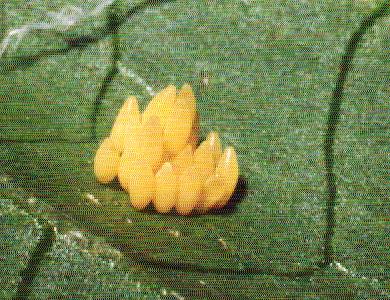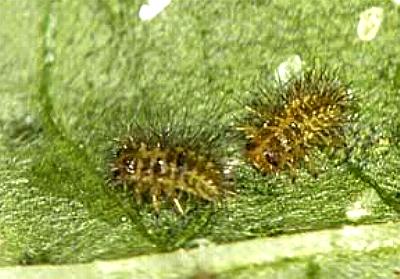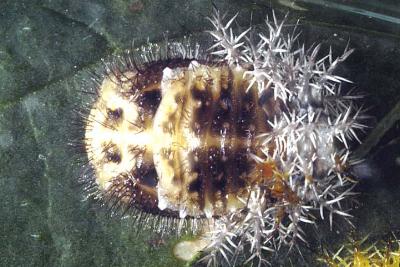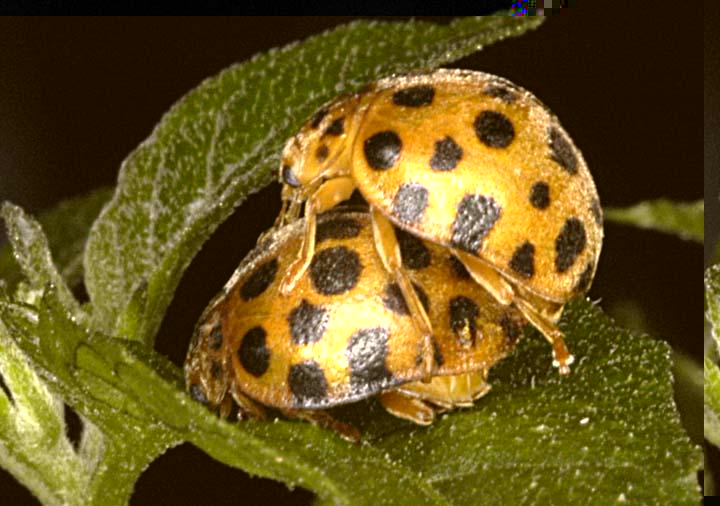
| 28 Spot Ladybird (previously known as Epilachna vigintioctopunctata) COCCINELLIDAE, COLEOPTERA | (donherbisonevans@yahoo.com ) and Stella Crossley |

(Photo: courtesy of the
Macleay Museum, University of Sydney)

| 28 Spot Ladybird (previously known as Epilachna vigintioctopunctata) COCCINELLIDAE, COLEOPTERA | (donherbisonevans@yahoo.com ) and Stella Crossley |

(Photo: courtesy of the
Macleay Museum, University of Sydney)
These little beasties start life as one of a cluster of tall pointed yellow eggs, each about two millimetres high and one millimetre across. Typically, they are laid on the underside of a leaf of a foodplant.

The larvae are not true Caterpillars, but are the larvae of a ladybird beetle. The larvae are round and yellow with sparse stiff dark hairs. They feed on various members of the plant family SOLANACEAE, being agricultural pests on:
A wild population is maintained on weeds such as:
They also attack crops from the family CUCURBITACEAE, such as:

The larvae grow to a length of about 8 mms. They pupate on the underside of a leaf.

The adult is round and yellow with 28 black spots, and has a length of about 8 mms.
It is also a pest in:

Further reading :
Johan Christian Fabricius,
Historiae Natvralis Favtoribvs,
Systema Entomologiae,
Flensburgi et Lipsiae (1775), p. 84, No. 34.
 not-lepidoptera |  not-caterpillars |  Lepidoptera |  not-moths |  not-lepidoptera |
(updated 20 December 2009, 17 April 2013)